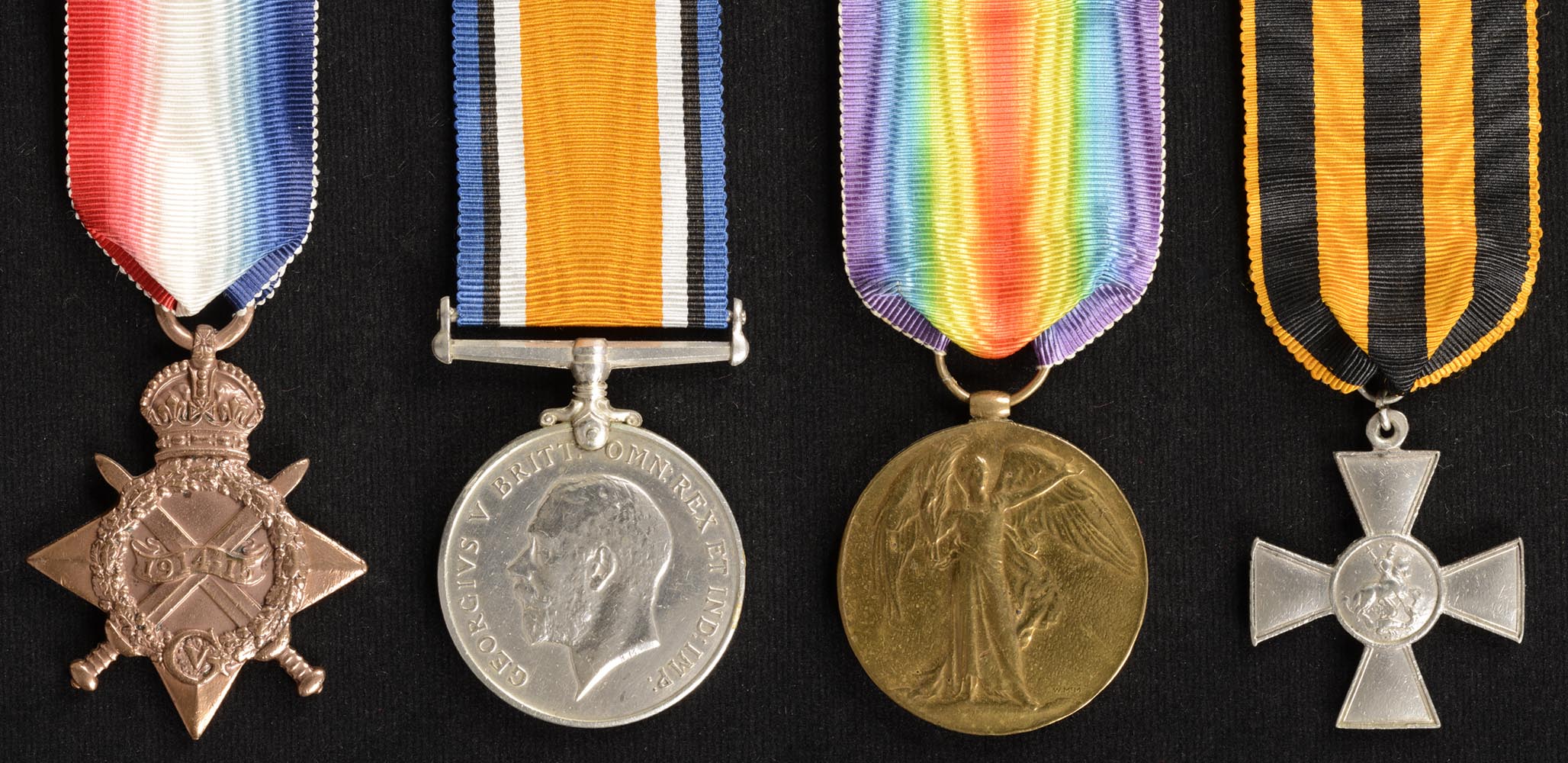

Display No. 16L
PHILLIPS, Albert Charles Smith
Albert Phillips joined the Royal Navy in January 1910 as a Boy 2nd Class. He completed his training in HMS Ganges II. He was then posted to HMS Essex. Pearce took his first posting as an Ordinary Seaman in the Home Fleet battleship HMS King Alfred in 1910. In 1911 Phillips was posted to HMS Victorious also based in the Home Fleet. Later that year, Phillips served in the battleship HMS Illustrious operating in home waters. He reached the rate of Able Seaman in 1912 and shortly afterwards took a posting in HMS Cornwall serving in home waters. In 1913, Phillips joined the submarine service and began training in HMS Dolphin. He initially served in B and D class submarines and qualified as a Leading Torpedo Man.
During the First World War, Phillips was present at the Battle of Heligoland Bight and Doggerbank in submarine E7. In mid-1915 Phillips was posted to the submarine E18 operating in the Baltic. On 23 October 1915, he was serving in the submarine E8 based at a Russian port in the Baltic when E8 intercepted the large German cruiser Prinz Adalbert. Phillips fired the torpedo that sank the ship. For his exploits, Phillips was awarded the Russian Order of St George. Phillips returned to his usual submarine E18 sometime after the presentation ceremony in November 1915. For unknown reasons, Phillips missed the ill-fated patrol of his submarine when E18 went missing on 25th May 1916. Phillips continued serving in submarines in the Baltic until January 1918. In May 1918, he joined the minelaying submarine L17. A year later Phillips joined the submarine K12.
In March 1920, he was assigned to the crew of HMS Hood which was nearing the end of its construction. Phillips was part of the commissioning crew and returned with the ship to the Baltic Sea. On 30 September 1920, Phillips transferred to the New Zealand Division of the Royal Navy. He joined the crew of HMS Chatham assigned to the New Zealand Station. Phillips was discharged ashore in 1923 and settled in New Zealand.
Awarded medal(s)
Medal Description [Left to Right]:
The 1914-1915 Star
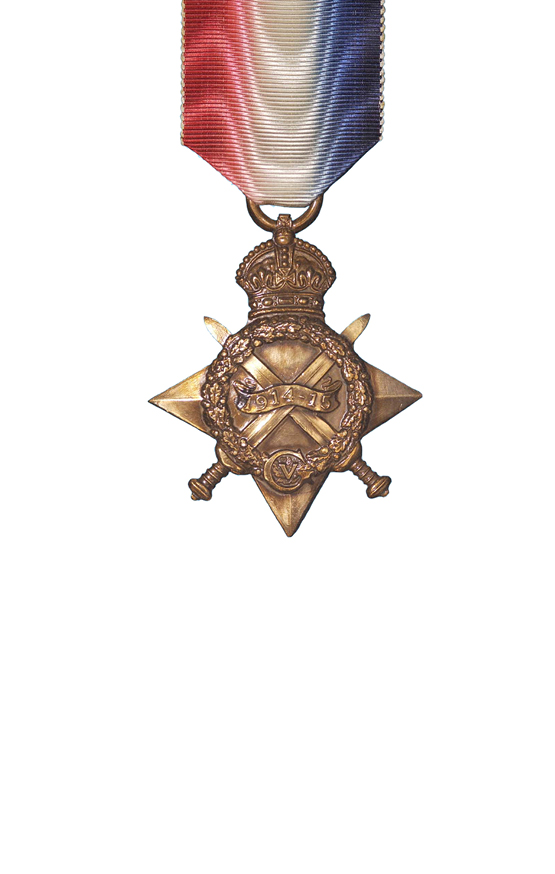
The 1914-15 Star was awarded to servicemen and servicewomen who served in the First World War between 5 August 1914 and 31 December 1915 in any “theatre of war”, provided they had not qualified for the 1914 Star. This included service at Gallipoli between 25 April 1915 and 31 December 1915, service in Egypt between 5 November 1914 and 31 December 1915, and service during the capture of German Samoa on 29 August 1914. Those eligible for the medal must have “served on the establishment of a unit in a theatre of war” during the relevant dates of operations in that area. The ribbon’s red, white and blue shaded and watered bands represent the flag of the United Kingdom.
The British War Medal
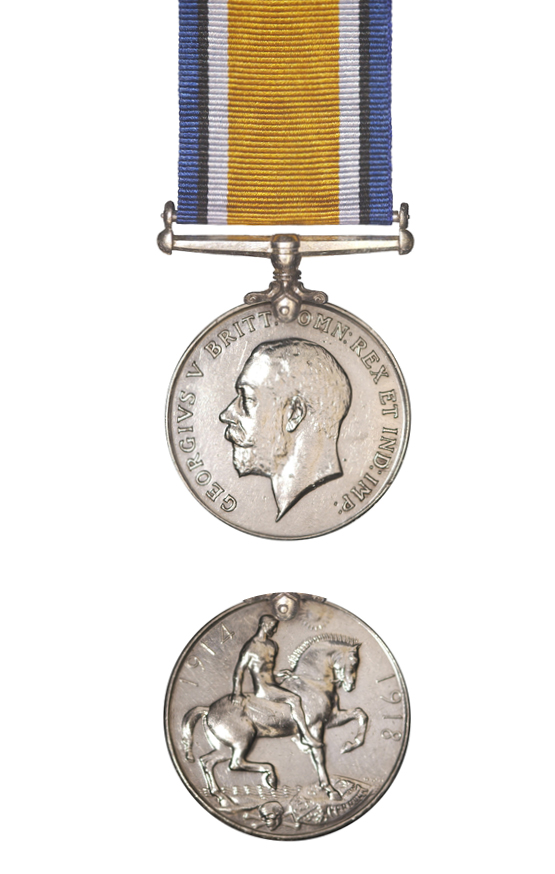
The British War Medal was instituted in 1919 to recognise the successful conclusion of the First World War (1914-1918). Its coverage was later extended to recognise service until 1920, recognising mine clearing operations at sea, and participation in operations in North and South Russia, the eastern Baltic, Siberia, the Black Sea and the Caspian Sea.
The Victory Medal
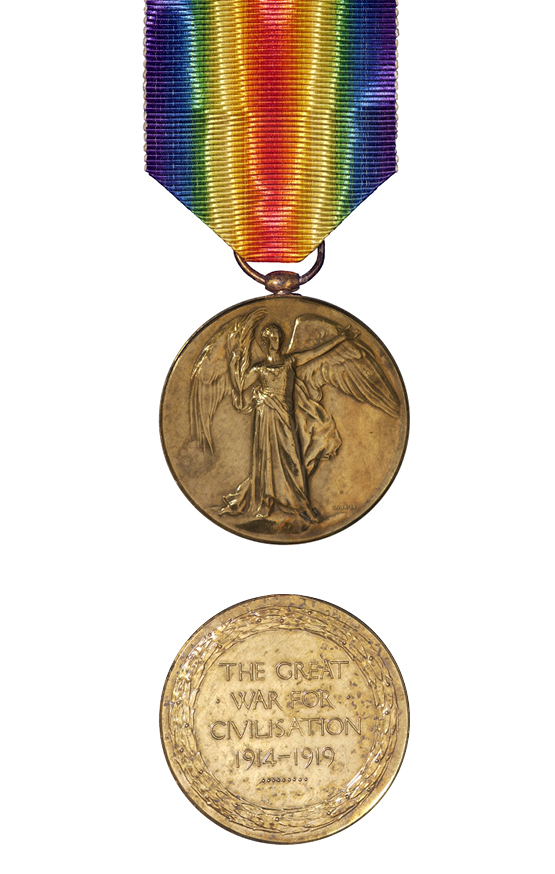
The Victory Medal was awarded in the First World War to all those who had already qualified for the 1914 Star or the 1914-15 Star, and to most persons who had already qualified for the British War Medal. The Victory Medal was awarded to all New Zealand troops serving overseas, except for those who arrived in Samoa after 30 August 1914 and those serving in Great Britain only. It has a unique double rainbow ribbon.
A bronze spray of oak leaves on the medal ribbon denotes that the recipient was Mentioned in Despatches during the period that the medal recognises. To be Mentioned in Despatches a member of the armed forces has had their name mentioned in an official report, written by a superior officer, and sent to a higher command. The report would describe the individual’s gallant or meritorious action in the face of the enemy.
Cross of St George
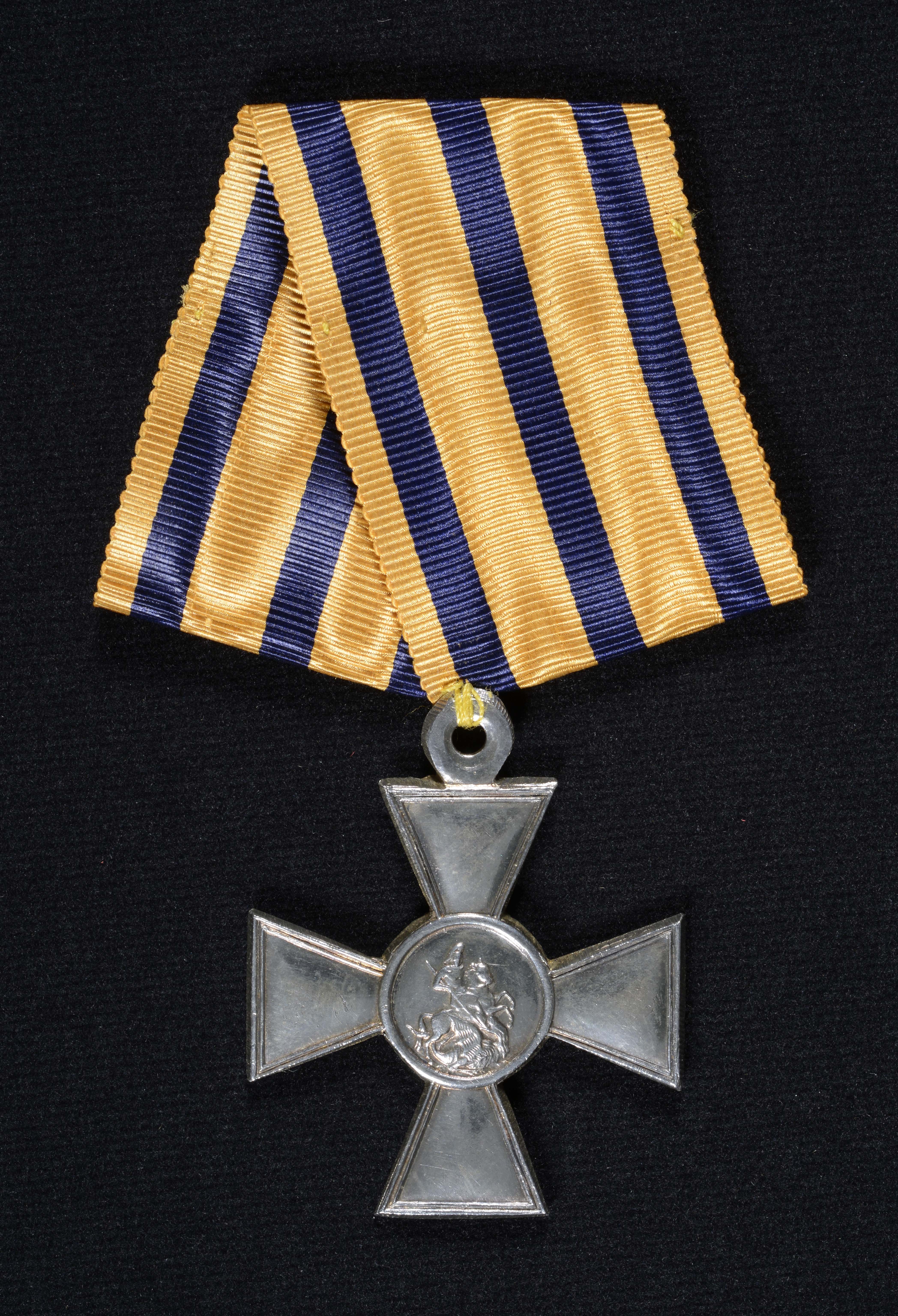
A state decoration of the Russian Federation awarded to soldiers, sailors, sergeants, petty officers, warrant officers and junior officers for deeds and distinction in battle in defence of the Fatherland. It is also awarded for deeds and distinction in battle on the territory of other states, while maintaining or restoring international peace and security, with recognised instances of courage, dedication, and military skill.

